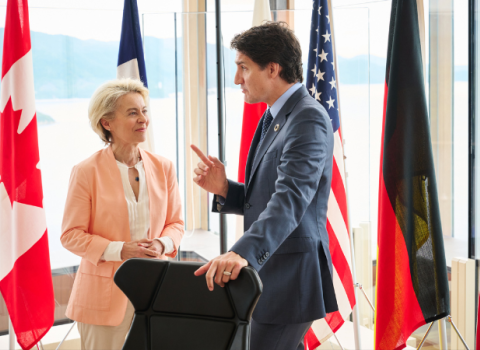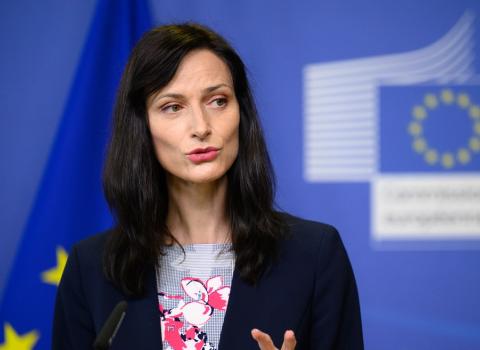The EU has set out five potential paths for managing the budget as it looks to make up a big hole in the accounts made by the UK’s impending departure.
Among the options outlined in a paper on reforming the EU budget published this week, are a much lower to a significantly higher budget from 2020, under the headings of "carrying on", "doing less together", "those who want more, do more", "radical redesign" and "doing much more together".
All scenarios foresee a higher use of financial instruments and guarantees with money from the EU budget, which is equivalent to about 1 per cent of the total gross domestic product of the 28 member states.
These schemes would allow the EU to do more with less, the paper argues. Grants and subsidies would continue for projects that do not generate revenues, for example for basic research.
With the UK as the second-largest net contributor after Germany leaving, and Brussels taking on more responsibilities in migration, fighting terrorism, and defence policy, an overhaul of the EU budget is a must. At the same time the EU must look for new sources of revenue, said Budget Commissioner Günther Oettinger.
“We will have a gap of €10 - €12 billion a year after the UK leaves so we need to look at shifting expenditure and making cuts,” Oettinger said.
On the plus side, the paper argues that the departure of the UK in 2019 will, “remove some obstacles to reform on the revenue side of the EU budget.”
The document outlines possible new cash streams to fill the hole caused by Brexit, including a financial transaction tax and common energy or environmental taxes on imports.
The other option is to spend less. However, Oettinger did not get into which spending priorities the EU should shelve. That is for EU governments to debate, he said, adding, “No area is immune. Every area needs to modernise; no area is going to be automatically saved.”
The paper says there must be reflection on whether all existing instruments “are indispensable or whether there is scope for merging or closing programmes.”
Funding for small businesses is one area that could see consolidation. SMEs go to three main EU programmes for money, COSME, Horizon 2020 and the Juncker Plan, currently. “This overlapping product offer has caused some confusion for financial intermediaries as to which scheme to apply,” the paper says.
With the Commission expected to present spending proposals for the 2021-2027 cycle by the middle of next year, including for the ninth research framework programme, there is not much time for EU leaders to determine what path to take.
It looks likely is that farmers and poorer regions, together recipients of 70 per cent of the EU budget, will see some cuts.
The paper suggests that governments could take on some of the direct payments to farmers made under Common Agricultural Policy.
Regional development aid for richer countries in the bloc could also be pared back. “The question should be asked as to whether cohesion policy funding should be available to the more developed countries and regions,” the report says.
A shorter budget cycle is another option under consideration. A five-year timeframe, as opposed to the current seven-year one, would make it “easier to adjust to unforeseen developments” and align with the mandates of the European Parliament and the Commission.





 A unique international forum for public research organisations and companies to connect their external engagement with strategic interests around their R&D system.
A unique international forum for public research organisations and companies to connect their external engagement with strategic interests around their R&D system.